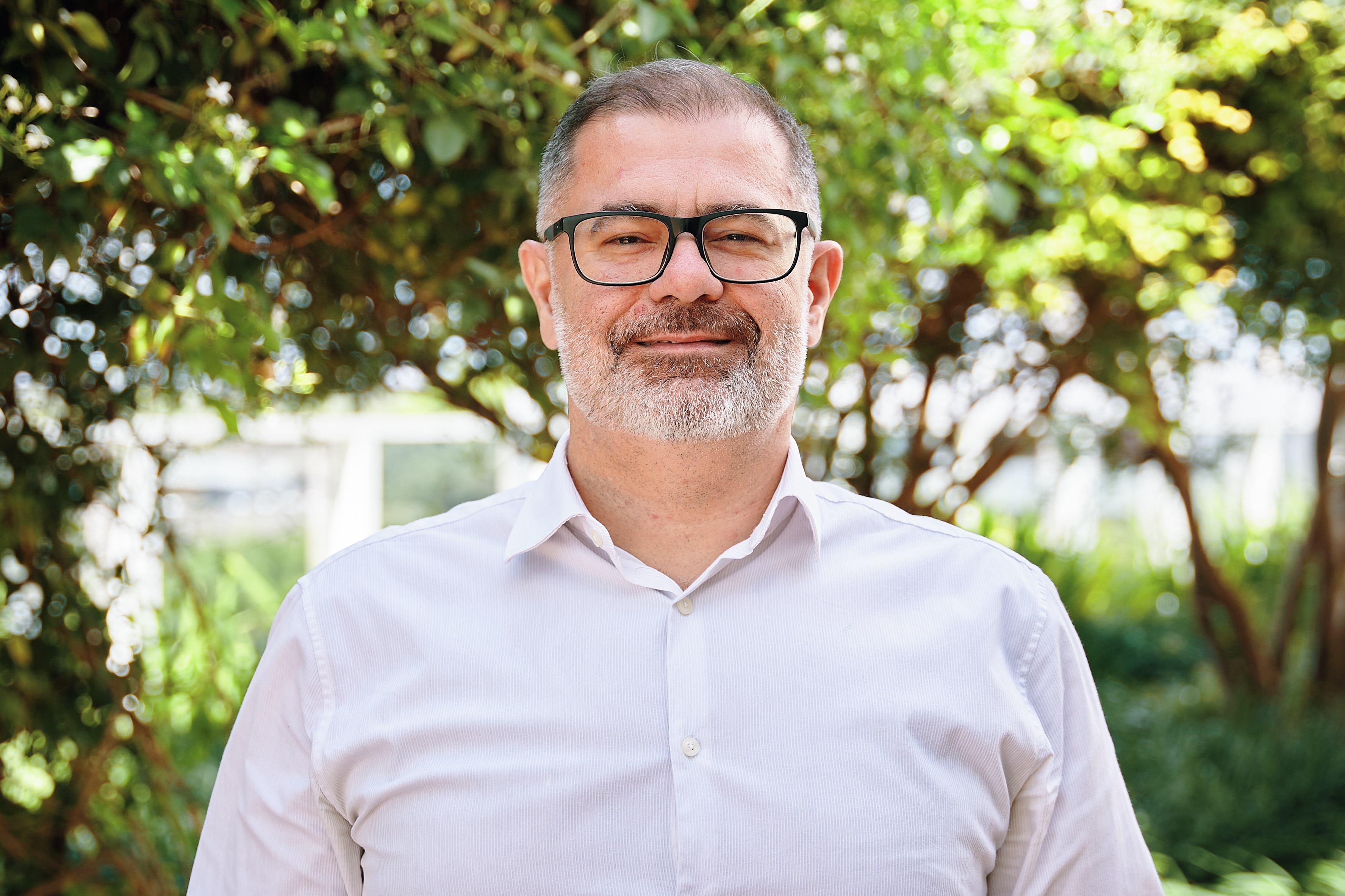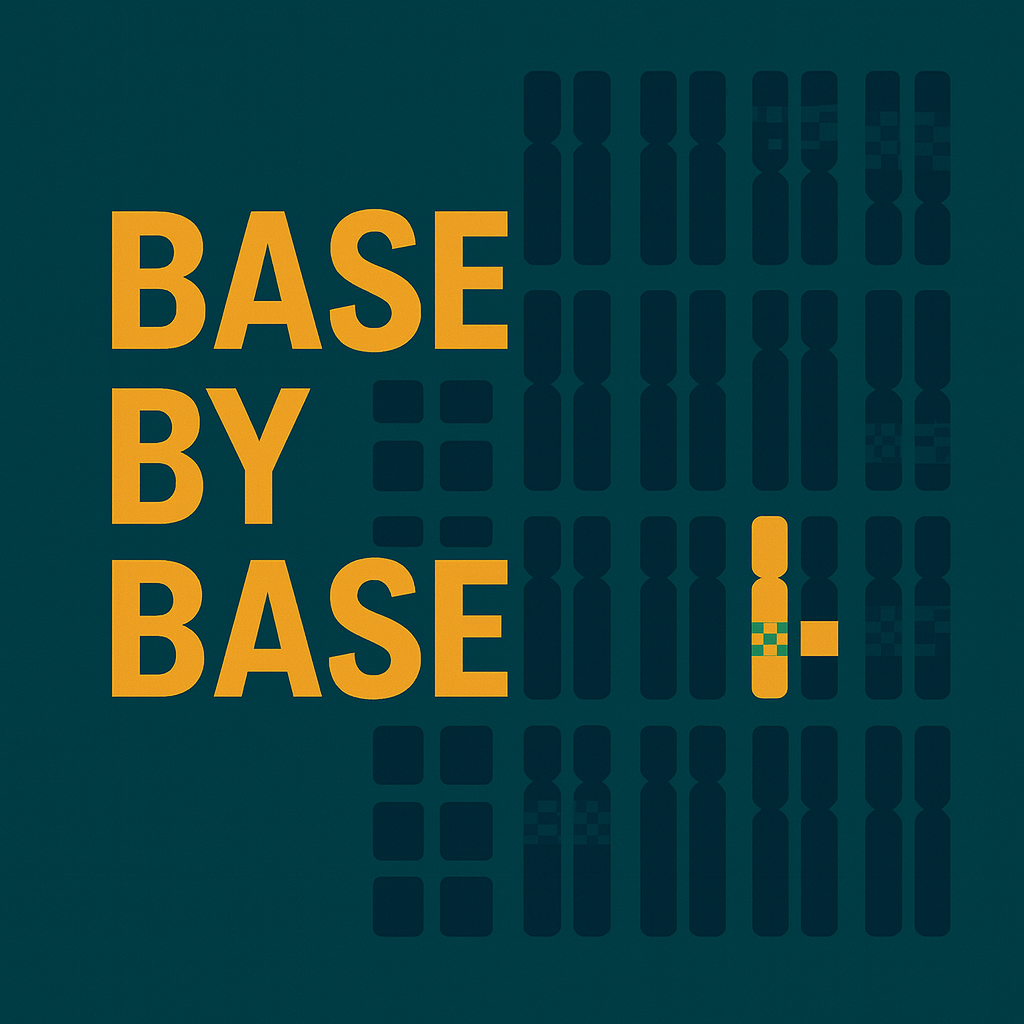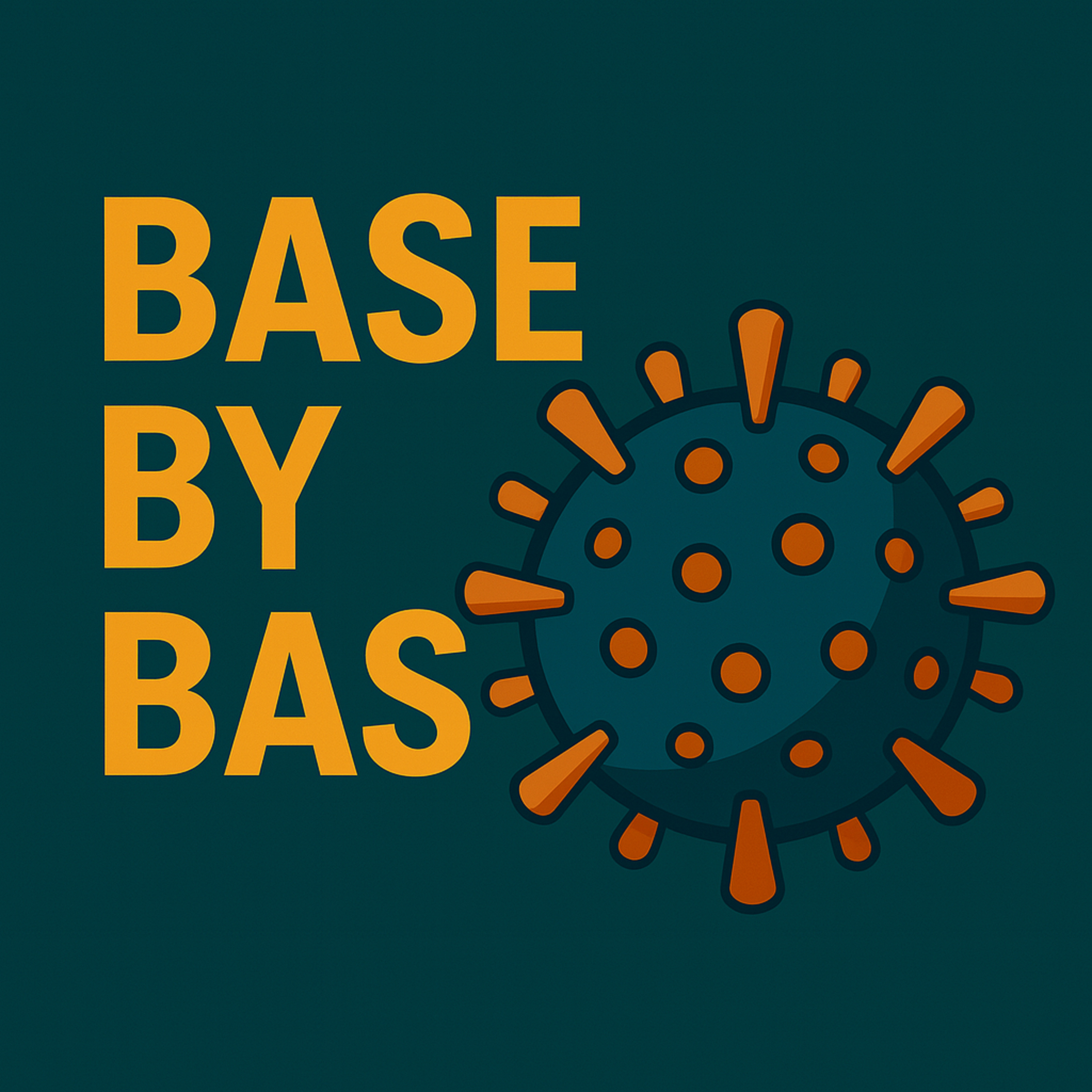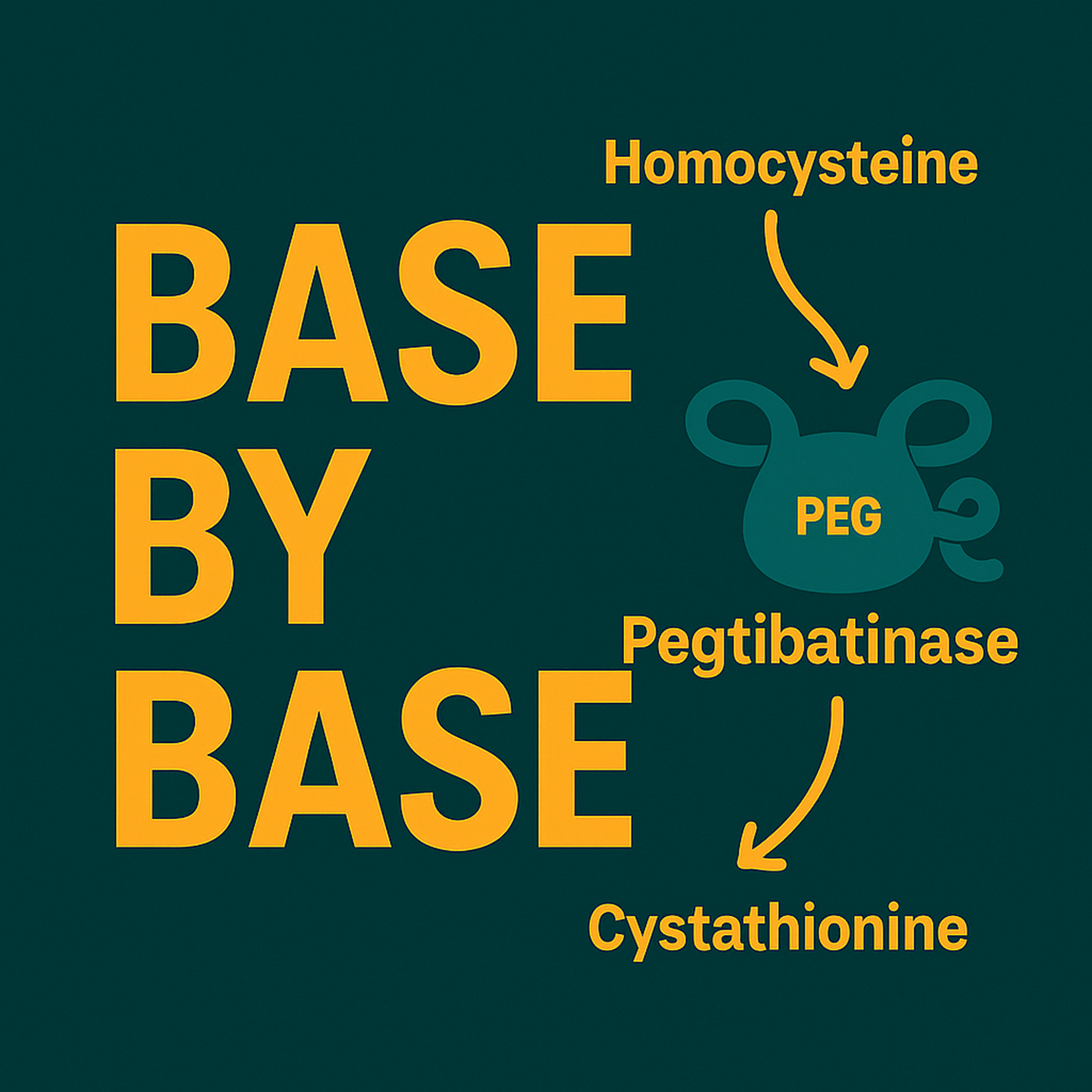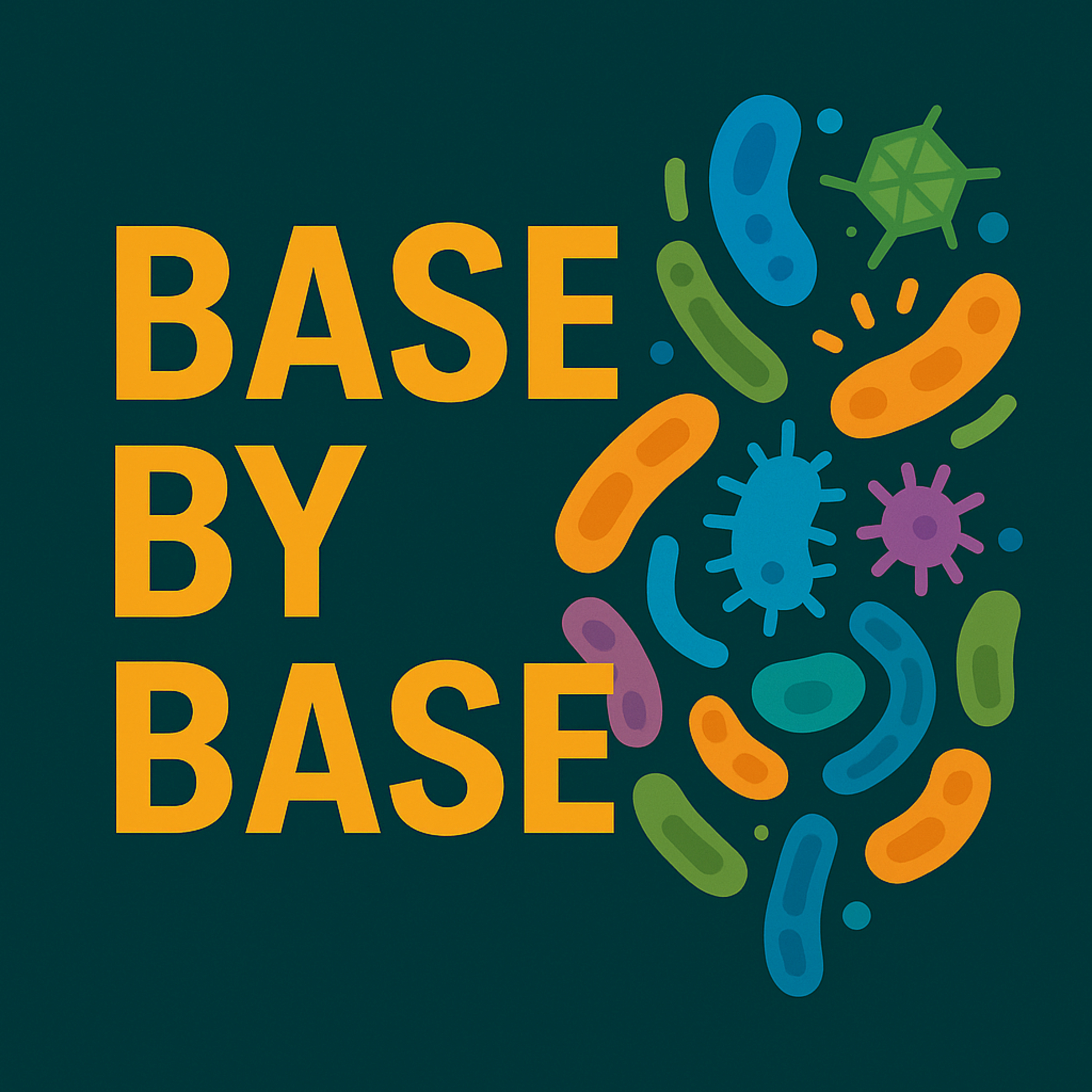Episode Transcript
[00:00:00] Speaker A: Foreign.
Welcome to Base by Base, the papercast that brings genomics to you wherever you are.
Okay, so for decades, I think it's fair to say, the conversation around reproductive health, genetics, it's been dominated by this one pretty solid rule. Advanced maternal age means a higher risk of chromosomal issues like Trisomy 21.
[00:00:36] Speaker B: Absolutely. That's been a cornerstone of genetic counseling. It's driven by those well understood meiotic errors in the egg. We know the mechanism, we see the link.
[00:00:46] Speaker A: It's a standard assumption, right?
[00:00:47] Speaker B: It is. Clinicians worldwide, counsel, based on that increased risk profile for older mothers.
[00:00:53] Speaker A: But what if the error isn't, you know, across the board? What if it's not all cells? We're talking about mosaicism, where only some cells in the fetus actually carry that extra chromosome.
[00:01:02] Speaker B: Right. And these mosaic cases, they're much rarer, they're definitely more complex, and crucially, they often involve different mechanisms entirely, things happening after fertilization, like rescue events, not just that initial egg error.
[00:01:15] Speaker A: And this is where things get really interesting, potentially turning our understanding upside down.
[00:01:19] Speaker B: That's exactly what this deep dive is about. If you just take the rules for standard non mosaic trisinase and slap them onto mosaic cases, well, you might be making a serious clinical misstep. We looked into a massive study today, and honestly, the findings on maternal age, they don't just challenge what we thought we knew. They seem to flip it in some ways. Yeah. Especially when you look at pregnancies resulting in healthy babies, it looks like the relationship with maternal age might be completely reversed.
[00:01:47] Speaker A: So a huge synthesis of data suggesting that for certain mosaic conditions, the whole AMA risk paradigm, it just doesn't fit neatly. We might need a total rethink on risk and recurrence here.
[00:01:59] Speaker B: Definitely. But before we really dig into this paradox, we absolutely have to acknowledge the researchers behind this massive effort.
[00:02:05] Speaker A: Absolutely.
[00:02:06] Speaker B: Today's deep dive is grounded in the article Mosaicism for Autosomal A comprehensive analysis of 1266 published cases focusing on maternal age and reproductive history.
[00:02:17] Speaker A: And that paper, a real landmark piece, was authored by Natalia V. Kovaleva and Philip Decotter. It came out in Genes just this year, 2024. And like you said, this wasn't a typical lab study. It's the first real systematic attempt to pull together all the published demographic data on mosaic carriers. A huge undertaking.
[00:02:36] Speaker B: Yeah, monumental. So, just to set the stage quickly, we all know the common non mosaic trisomies, T21, T18, T13, they're generally the only ones compatible with life, though often with significant challeng Right.
[00:02:49] Speaker A: And trisomies for pretty much any other chromosome. Usually lethal very early on.
[00:02:53] Speaker B: Exactly. Trisomy 16, for instance, is actually the most common trisomy found in early miscarriages. Accounts for maybe 25% of all trisomies, but almost never makes it far.
[00:03:02] Speaker A: So that's the grim picture for non mosaic cases. T21, 18, 13 are the survivors. Everything else is largely lost. Now let's pivot to this world of mosaicism for autosomal trisomies, or most.
[00:03:13] Speaker B: Okay, so most. It's diagnosed much less often after birth. Maybe rarer than 1 in 10,000 prenatally, seen in less than 1% of tests. But the key thing here, as we hinted, is the origin.
[00:03:22] Speaker A: It doesn't have to start with that initial meiotic error in the egg or sperm.
[00:03:27] Speaker B: Precisely. It can pop up postzygotically. Meaning the error happens after fertilization, as the embryo cells start dividing. One cell makes a mistake, and then you have two cell lines.
[00:03:38] Speaker A: Or, and this is the really fascinating mechanism, it can start as a full trisomy, a non mosaic conception, but then the embryo tries to fix itself through something called trisomy correction. Or trisomy rescue.
[00:03:53] Speaker B: Exactly. That. The cellular machinery recognizes. Whoa. Three copies here. And during a later cell division, it kicks out the extra chromosome in one lineage. It's an attempt to restore the normal diploid state.
[00:04:05] Speaker A: And that rescue attempt is what creates the mosaicism. You end up with the original trisomic line and this newly corrected diploid line.
[00:04:12] Speaker B: Correct. And this is where it gets clinically critical, because how that correction happens has major downstream effects.
[00:04:17] Speaker A: Okay, so the correction itself isn't always a per perfect fix.
[00:04:20] Speaker B: Not necessarily. When that trisomy rescue happens, the resulting normal diploid cell line has two main possibilities.
About two thirds of the time, it successfully restores biparental disamy bpd. One chromosome from mom, one from dad. That's the ideal outcome, the good outcome.
[00:04:37] Speaker A: But the other third.
[00:04:38] Speaker B: The other third. That's where things can go awry. Even without the trisomy persisting, the cell can end up with uniparental disamy or update.
[00:04:46] Speaker A: Meaning both copies of that chromosome pair come from just one parent.
[00:04:50] Speaker B: Exactly. Either Both from or both from dad.
Now, the cell has the right number of chromosomes, too. But if that chromosome carries imprinted genes where only the maternal or paternal copy is normally active, while having two copies from the same parent messes up the gene dosage for those specific regions.
[00:05:07] Speaker A: And that leads to trouble. Even without the extra chromosome, the UPD itself causes specific syndromes absolutely.
[00:05:13] Speaker B: Think about chromosome 14, for example. UPD for chromosome 14 can cause serious imprinting disorders like Temple syndrome or Kagami Ogata syndrome. So the mechanism of rescue BPD versus UPD is incredibly important.
[00:05:26] Speaker A: Which brings us right back to why this study was so necessary. You can't just apply the simple maternal age rules from non mosaic T21, because the origins and outcomes of mosaicism are so much more varied.
[00:05:37] Speaker B: Precisely. Postzygotic errors, meiotic errors, followed by rescue BPD outcomes, UPD outcomes. It's a completely different landscape. We needed data specifically on these cases.
[00:05:46] Speaker A: Okay, so let's talk methodology. This was a massive literature review. How many papers, how many cases did they actually manage to synthesize?
[00:05:53] Speaker B: It was huge. They screened over 800 publications.
From those, they were able to select 596 papers that had usable data on 1,266 distinct cases of mosaic autosomal trisomies. Just collating that is a job in itself.
[00:06:10] Speaker A: Definitely. And how do they break down those cases?
[00:06:12] Speaker B: They split them primarily by detection timing. So 948 were prenatal diagnoses that included both true fetal mosaicism, where they confirmed mosaicism in the fetus, and confined placental mosaicism, cpm, where it was only found in placental samples.
[00:06:27] Speaker A: Okay. And the rest?
[00:06:28] Speaker B: The other 318 cases were postnatally detected mosaicism, or PNM. These are individuals diagnosed after birth, usually because they presented with clinical features.
[00:06:38] Speaker A: Now, anyone who works in clinical genetics knows getting detailed, consistent demographic data from published case reports is.
Well, it's tough. How good was the data quality overall?
[00:06:49] Speaker B: Yeah, that was the major challenge. And the authors are very upfront about it. Maternal age, which was central to their analysis, was only available for about 58% of the prenatal cases and maybe 68% of the postnatal ones.
[00:07:03] Speaker A: Okay, not ideal, but maybe workable.
[00:07:05] Speaker B: It's a significant chunk missing and reproductive history, things like previous pregnancies losses, which is vital for recurrence risk assessment that was even worse, reported in only about 27% of all cases.
So while 1266 cases sounds like a lot for a rare condition, they emphasize this isn't really big data in the modern sense due to the patchiness of the reporting in the original literature.
[00:07:28] Speaker A: And they had to be really careful defining abnormal outcome, too, didn't they? Because sometimes things like iugr, intratrorder, and growth restriction get lumped in.
[00:07:36] Speaker B: They were very specific, which strengthens their findings. They defined abnormal outcomes only if there were clear structural defects, developmental delay, or intervention, intellectual disability, Crucially, isolated IUGR or isolated pigmentary changes like skin patches were not counted as abnormal for their main comparisons.
[00:07:55] Speaker A: That rigorous definition is key. Okay, let's get into the findings. Here's where it starts to get really interesting. What did they see? Just looking at which mosaic trisomies actually show up prenatally versus postnatally.
[00:08:07] Speaker B: Right. The first key finding was about the profile of mosaicism. They noticed that certain mosaic trisomies, specifically for chromosomes 4, 5, 6, and 11, were seen reasonably often in prenatal tests, but they were almost completely absent in the cases diagnosed after birth.
[00:08:23] Speaker A: Huh. So what does that suggest? That those specific ones often resolve or lead to healthy babies.
[00:08:29] Speaker B: Right? Exactly. The implication is that for most t4, t5, t6, and t11, the mosaicism frequently leads to normal outcomes. The trisomic cell line might get cleared out effectively, or maybe it's consigned to tissues that don't cause major problems.
The baby is born healthy, and the mosaicism just goes undetected later in life.
[00:08:48] Speaker A: Interesting. It shows the body can sometimes handle these very effectively. Okay, but now finding two. The big one. The maternal age paradox. Remind us. AMA is 35 or older. What did they find for mothers with normal outcomes?
[00:09:02] Speaker B: This is where it gets really counterintuitive. First off, there was no significant difference in AMA rates between mothers whose babies had normal outcomes and those whose babies only had IUGR. Both groups had a high proportion of AMA mothers around 73%.
[00:09:16] Speaker A: 73% AMA for normal outcomes. Okay, that already feels weird compared to the standard T21 story. But wait, there's more.
[00:09:23] Speaker B: Oh, yeah. Here's the real kicker. When they compared mothers with a normal offspring to mothers whose children had abnormal clinical outcomes, structural defects, developmental delay, the AMA rate was significantly higher in the normal outcome group. Yes.
73% AMA for normal outcomes versus only 56% AMA for abnormal outcomes. And that difference was statistically highly significant.
[00:09:46] Speaker A: Hold on. Are you saying advanced maternal age was somehow associated with a better outcome when mosaicism was present? That completely flips the script. Decades of teaching say older age equals higher risk of problems?
[00:09:58] Speaker B: It looks like it on the surface, but the interpretation is likely about selection, not protection. Think about the average maternal ages. Okay, the average age for mothers with normal outcomes was about 35.8 years.
But for abnormal outcomes, it was lower, 33.9 years. And for pregnancies ending in fetal loss, it was even lower, 33.3 years.
[00:10:17] Speaker A: Ah, okay, so maybe the older mother's reproductive system is more efficient at weeding out the problem. Pregnancies early.
[00:10:25] Speaker B: That's the hypothesis. Enhanced selective miscarriage. It suggests that in older mothers, mosaic pregnancies with severe abnormalities are more likely to be lost earlier, perhaps in the first trimester, before detection.
[00:10:35] Speaker A: So if an older mother does carry a mosaic pregnancy further along, the fetus that survived, that tougher selection process is more likely to be one where the mosaicism was less severe or was corrected more successfully.
[00:10:47] Speaker B: Precisely. The higher rate of AMA in the normal outcome group doesn't mean age is protective. It means that group represents the successful survivors of a more stringent intrauterine selection process that happens with advanced age.
[00:11:00] Speaker A: It's a filtration effect that makes biological sense as a selection effect, but wow, it demands a total shift in how we think about counseling based on age in these cases. Okay, finding three. This connects AMA directly to the mechanism of rescue that UPD versus BPD split we talked about.
[00:11:16] Speaker B: Yes. This links age to the underlying biology. Remember, UPD carries those potential imprinting disorder risks. The study found that mothers carrying mosaic fetuses where the rescue resulted in UPD had a significantly higher proportion of AMA compared to those where the rescue resulted in the safer bpd.
[00:11:32] Speaker A: How much higher? Give us the numbers.
[00:11:34] Speaker B: Overall, it was stark. 78% of the mothers in the UPD group were AMA compared to only 48% in the BPD group.
[00:11:41] Speaker A: Wow. 78 versus 48%. That's a huge difference.
[00:11:44] Speaker B: It is. And if you look at most T14s specifically where upd is known to cause problems, the difference was even more dramatic. 92% of the UPD carriers had AMA mothers, compared to just 55% of the BPD carriers.
[00:11:57] Speaker A: That's incredibly compelling. So advanced maternal age isn't just linked to the initial trisomy error. It seems to somehow bias the repair process itself towards the potentially riskier update.
[00:12:09] Speaker B: It certainly looks that way. It raises a really fundamental. What is it about the cellular environment in an older mother that promotes this preferential disposal of the other parent's chromosome during trisomy rescue? It suggests a very specific age dependent bias in how chromosomes are handled during early mitosis.
[00:12:26] Speaker A: Fascinating. Okay, final key finding four. This shifts to reproductive history and recurrence risk. Maybe the most immediately practical point for genetic counseling.
[00:12:35] Speaker B: Absolutely. Looking at the limited reproductive history data they had, they found mothers in the postnatal group. So those who already had a child with clinical issues due to mosaicism had almost double the rate of previous fetal loss compared to the prenatal groups. About 30% versus 16%.
[00:12:51] Speaker A: Okay, so that suggests some underlying reproductive instability in those families.
[00:12:54] Speaker B: Already it does. But the real shocker was the overall recurrence rate for any previous chromosome abnormality, not just mosaicism. In these cohorts, the chance of having had a previous pregnancy with any chromosome issue was incredibly high.
[00:13:07] Speaker A: How high?
[00:13:08] Speaker B: Roughly 1 in 13 for the prenatal group and 1 in 16 for the postnatal group.
[00:13:12] Speaker A: 1 in 13. Wait, how does that compare to recurrence risk after a standard non mosaic trisomy like T21?
[00:13:19] Speaker B: That's the staggering part. It's about five times higher. Published studies on recurrence after a non mosaic trisomy usually put the risk somewhere between 1 in 72 and 1 in 1 in 2. Here we're seeing 1 in 13 to.
[00:13:30] Speaker A: 1 in 16, five times higher.
That's not just statistical noise, that's a massive difference in risk profile.
[00:13:37] Speaker B: It's huge. It strongly points towards an underlying predisposition in these families. Either a genetic tendency towards chromosome nondisjunction or perhaps parental gonadal mosaicism, where the parent carries the mosaicism in their egg or sperm cells. It's far beyond the background risk we usually quote.
[00:13:55] Speaker A: This has got to change how recurrence risk is discussed for families who've had a mosaic diagnosis.
Okay, let's circle back to the implications that AMA paradox, 73% AMA and normal outcomes. If older mothers are effectively better selectors, counseling needs to reflect that nuance, doesn't it?
[00:14:12] Speaker B: Absolutely. The paper really drives this home. You can't just apply the standard AMA risk stats derived from non mosaic T21 conceptions because most of those conceptions fail. The mosaic pregnancies that make it to term, especially in older mothers, are a highly selected group that likely navigated a tougher biological filter.
[00:14:30] Speaker A: So seeing a mosaic pregnancy continue in an older mother might actually reflect a successful correction rather than just being high risk in the traditional sense.
[00:14:38] Speaker B: Exactly. It requires a more sophisticated interpretation. And the AME UPD finding that link between older age and the riskier rescue mechanism that screams for more basic research. What molecular machinery changes with age to bias that repair pathway?
[00:14:54] Speaker A: That's a key biological question for the future. And we have to mention the limitations again, right? The data patchiness, definitely.
[00:15:01] Speaker B: The authors stress this. While the signals are strong, the poor reporting in the original case studies means these findings desperately need confirmation through large prospective studies. Maybe using national health registries or big international collaborations to get cleaner, more complete data. We're still building the full picture of mosaicism.
[00:15:19] Speaker A: So, boiling it down. What's the core take home message here?
[00:15:22] Speaker B: I think it's twofold. First, mosaic trisomies are fundamentally different creatures than non mosaic ones. Their relationship with maternal age is complex, seemingly reversed for normal outcomes due to selection, and tied directly to the specific resting mechanism UPD versus bpd. Second, a history of any chromosome abnormality is a major red flag for future mosaicism risk. The recurrence rate appears to be dramatically higher, up to five times higher than for standard aneuploidies, suggesting an underlying predisposition.
[00:15:52] Speaker A: Which leaves us with a really crucial question for clinical practice and future research.
What is driving that five fold higher recurrence rate and how can we use that knowledge to give families with a history of mosaicism much more precise personalized risk assessments and diagnostic strategies?
This episode was based on an Open Access article under the CCBY 4.0 license. You can find a direct link to the paper and the license in our episode description.
[00:16:20] Speaker B: If you enjoyed this, follow or subscribe in your podcast app and maybe leave a five star rating. It really helps and if you'd like.
[00:16:26] Speaker A: To support our work, please use the donation link you'll find in the description.
Thanks so much for listening and join us next time as we explore more science base by base.
